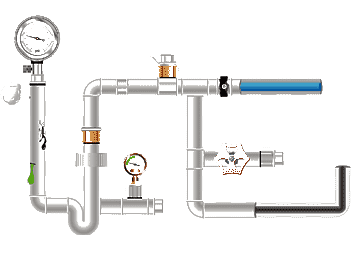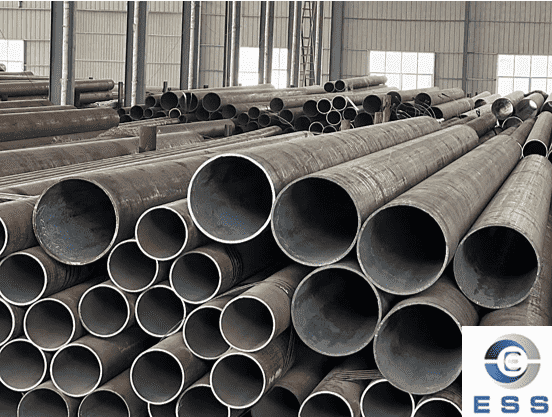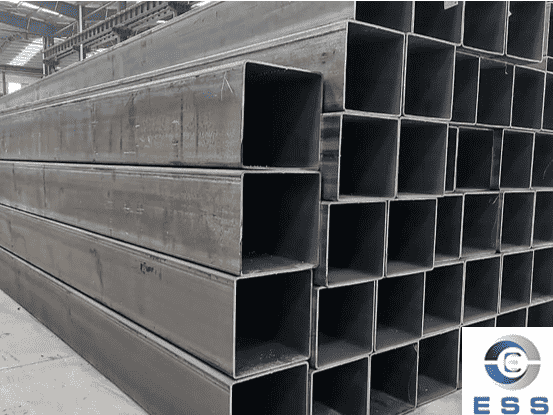Carbon Steel vs Iron
The difference between carbon steel and
iron is the carbon content. Steel is a general term for ferroalloys with a
carbon content of 0.02% to 2.04%. The chemical composition of steel varies
widely. Steel containing only carbon elements is called carbon steel or
ordinary steel; in actual production, steel often contains different alloying
elements, such as manganese, nickel, vanadium, etc., according to different
uses.
What Is Carbon
Steel?
In
fact, carbon steel (CS/MS seamless pipe) refers to the carbon content in the steel, on which its mechanical
properties depend. Generally, steel without alloying elements is also called
plain carbon steel or carbon steel, which refers to iron-carbon alloys with a
carbon content of less than 2%, while carbon steel also contains a small amount
of silicon, manganese, sulfur and in addition to carbon, there are phosphorus.
Generally speaking, carbon steel with higher carbon content has higher hardness
and strength, but lower ductility.
Carbon
steel can be divided into low carbon steel, medium carbon steel and high carbon
steel according to the carbon content:
Low
carbon steel: the carbon content is generally less than 0.25% (mass fraction);
Medium
carbon steel: the carbon content is generally 0.25%~0.60% (mass fraction);
High
carbon steel: the carbon content is generally higher than 0.60% (mass
fraction).
What
Is Iron?
Iron is a chemical element and a commonly used metal, a transition metal. Iron,
atomic number 26, relative atomic mass 55.847. Iron has many allotropes and is
a relatively active metal, ranking before hydrogen in the list of metal active
sequences.
At room temperature, iron is not easy to react with non-metallic elements such
as oxygen, sulfur and chlorine in dry air, but it reacts violently at high
temperature.
Iron
is divided into pig iron and wrought iron. Both are iron-carbon alloys
distinguished by their carbon content:
Generally,
iron with a carbon content of less than 0.2% is called wrought iron or pure
iron, while iron with a carbon content greater than 1.7% is called pig iron.
Wrought
iron is soft, malleable, and easily deformed, with low strength and hardness,
making it less widely used.
Pig
iron, with a high carbon content, is hard, brittle, and has almost no
plasticity.
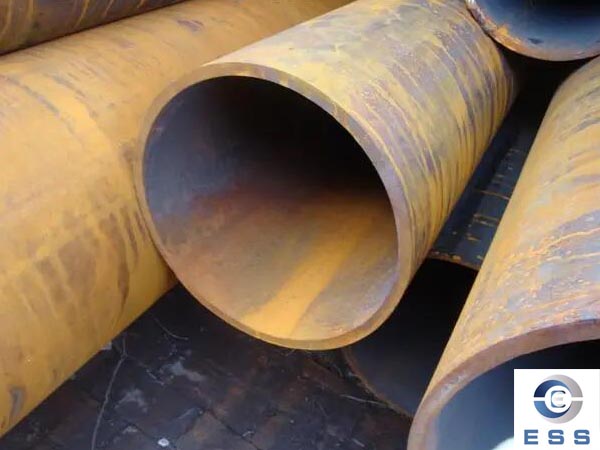
Carbon
Steel vs Iron: Composition
1.
Pure Iron
Contains ≤0.02% carbon (by mass) and contains virtually no other
alloying elements. It is soft and commonly used in electromagnetic components
(such as transformer cores).
2.
Carbon Steel
An
alloy of iron and carbon, containing 0.02%-2.1% carbon. Elements such as
manganese and silicon may be added to enhance performance. For example,
low-carbon steel (<0.25% carbon) is used in automotive sheet metal, while
high-carbon steel (>0.6% carbon) is used in cutting tools. Carbon steel pipe
contains 0.12%-2.1% carbon (ASTM A53 standard), along with trace amounts of manganese, phosphorus, and
sulfur.
Carbon
Steel vs Iron: Manufacturing Process
1.
Carbon Steel
Carbon
steel is typically produced through processes such as heating, forging, and
rolling. After heating, the billet is forged or rolled to produce carbon steel
products in various shapes. For example, carbon steel pipes are typically
formed through cold or hot rolling.
2.
Iron
Iron
is typically produced through ironmaking. During the ironmaking process, ore
and coke react at high temperatures to produce molten iron and slag. After
purification and tempering, the molten iron is purified and refined to produce
pure iron.
Carbon
Steel vs Iron: Performance
1.
Hardness And Wear Resistance
Pure
iron is relatively soft, with a hardness of around HV 120, and is not very
wear-resistant.
The
hardness of carbon steel increases with carbon content: low carbon steel has a
HV of 150-250, medium carbon steel has a HV of 300-500, and high carbon steel
can reach HV 600. Every 0.1% increase in carbon increases the hardness by
approximately 15 HV.
2.
Toughness And Deformability
Pure
iron has excellent toughness, an elongation of 28%, and can withstand
significant deformation. The toughness of carbon steel increases as its carbon
content decreases: low-carbon steel has an elongation of 25%, medium-carbon
steel has an elongation of 15%-20%, and high-carbon steel has an elongation of
less than 12%.
3.
Corrosion Resistance
Carbon
steel is more corrosion-resistant than iron. Certain alloying elements in
carbon steel can make it even more corrosion-resistant, allowing it to maintain
its strength and integrity in humid or harsh environments.
For
example, ordinary carbon steel pipes have a lifespan of approximately 20-30
years in mildly corrosive environments, while cast iron pipes are susceptible
to rust in humid environments and, without corrosion protection, have a
lifespan of only 10-15 years.
Carbon
Steel vs Iron: Price
1.
Carbon Steel Price
Due to
its superior properties and higher manufacturing costs, carbon steel is
generally more expensive than iron.
The
price of carbon steel is influenced by several factors.
First,
its price is related to its carbon content; higher carbon content carbon steel
is generally more expensive.
Second,
the addition of alloying elements and other additives also increases the cost.
These additives enhance carbon steel's strength, wear resistance, and corrosion
resistance.
In
addition, the production process and manufacturing costs are also important
factors in determining price.
2.
Iron Price
Iron's
price is relatively low, primarily due to its wide range of uses and abundant
reserves.
However,
different types of iron, such as pig iron and wrought iron, have different
prices.
Pig
iron is an iron alloy with a carbon content of 2% to 4.5%. It is commonly used
in the manufacture of heavy equipment and building structures.
Wrought
iron is a further processed form of iron with a lower carbon content and a
relatively higher price.
Carbon
Steel vs Iron: Typical Application
1.
Large Deformation Requirements
Pure
iron is suitable for applications requiring large deformation, such as bridge
castings and building buffers.
Carbon
steel is prone to stress concentration during large deformation, and
high-carbon steel is more prone to cracking, making it unsuitable for parts
that are prone to frequent bending.
2.
High Strength And Wear Resistance
Carbon
steel is suitable for high-load, high-wear environments: low-carbon steel is
used for building steel structures, medium-carbon steel is used for gear
shafts, and high-carbon steel is used for tool molds.
Pure
iron lacks strength and cannot be used for high-load components such as drive
shafts and tools.
FAQ
1. Which
Is Lighter, Carbon Steel Or Iron?
Iron
is a metallic element, so for the same volume, iron weighs more than the same
volume of carbon steel.
However,
for the same weight, carbon steel is harder and stronger than iron.
2. Carbon
Steel Vs. Cast Iron: Which One Should I Choose?
Carbon
steel has better machinability and processability, making it more suitable for
manufacturing mechanical parts.
Cast
iron, on the other hand, is more suitable for manufacturing parts requiring
high hardness and wear resistance.
Read
more: Carbon Steel Pipe vs. Black
Iron Pipe or Seamless Black Steel Pipe vs.
Black Iron Pipe









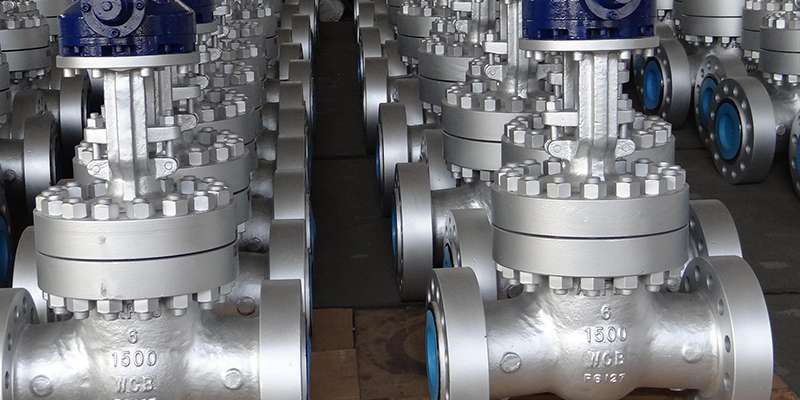



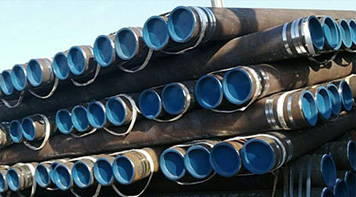 Eastern Steel Manufacturing Co.,Ltd not only improve product production and sales services, but also provide additional value-added services. As long as you need, we can complete your specific needs together.
Eastern Steel Manufacturing Co.,Ltd not only improve product production and sales services, but also provide additional value-added services. As long as you need, we can complete your specific needs together.
